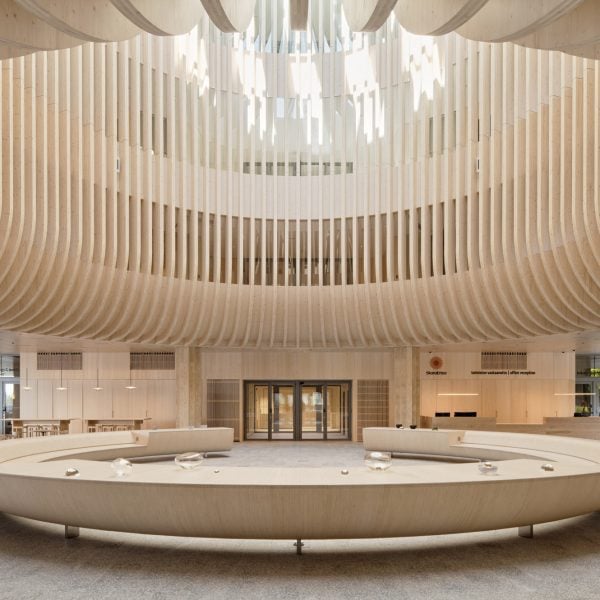Local studio Anttinen Oiva Architects has designed the mass-timber Katajanokan Laituri building in Helsinki as the headquarters for timber supplier Stora Enso.
Located in Helsinki’s historic waterfront Kauppatori market district, Katajanokan Laituri houses the headquarters of the Stora Enso forestry company along with the 164-room Katajanokka Pier 4 Hotel and a restaurant.
Anttinen Oiva Architects designed the 16,400-square-metre, four-storey building with an additional publicly accessible green rooftop terrace and a basement with a car park.
As the headquarters of mass-timber supplier Stora Enso, the building was designed to showcase the company’s products. The architecture studio used around 7,600 cubic metres of spruce and ash to create the structure, mostly composed of almost 2,500 pieces of cross-laminated timber (CLT) and laminated veneer lumber.
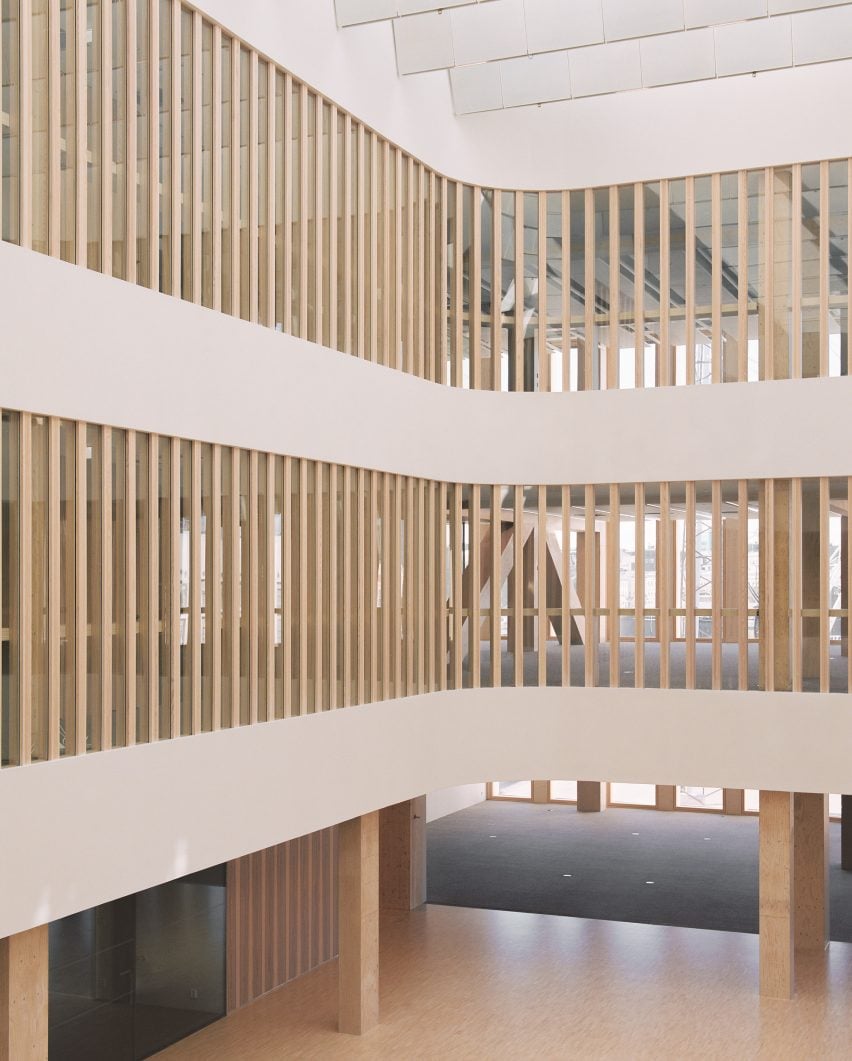
“Katajanokan Laituri is a solid wood office and hotel building that sets an example for the possibilities of wood construction in a sensitive urban environment,” said the architecture studio.
“The project has been guided by the objective of minimising climate impacts over a long lifecycle and making the best use of renewable resources and materials.”
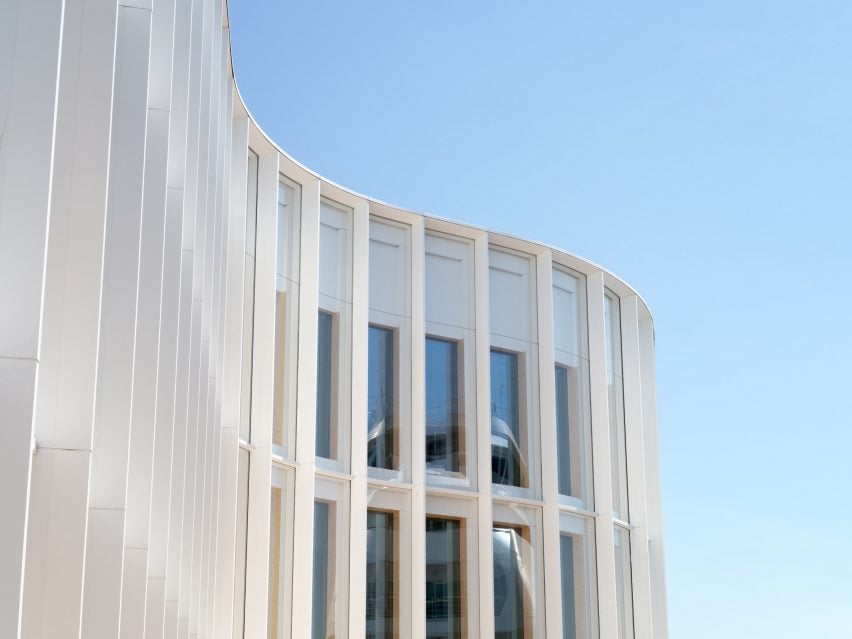
A two-layer solution was created for the facade, which features an outer layer made of glass, natural stone and white metal lamellas on top of a timber structure.
“A double skin was the best solution given the architecturally and technically challenging maritime context,” explained Anttinen Oiva Architects.
“The building’s appearance transforms at different times of the day and with lighting conditions, and fits the various scales and motifs of the surrounding stone buildings from different historical eras.”
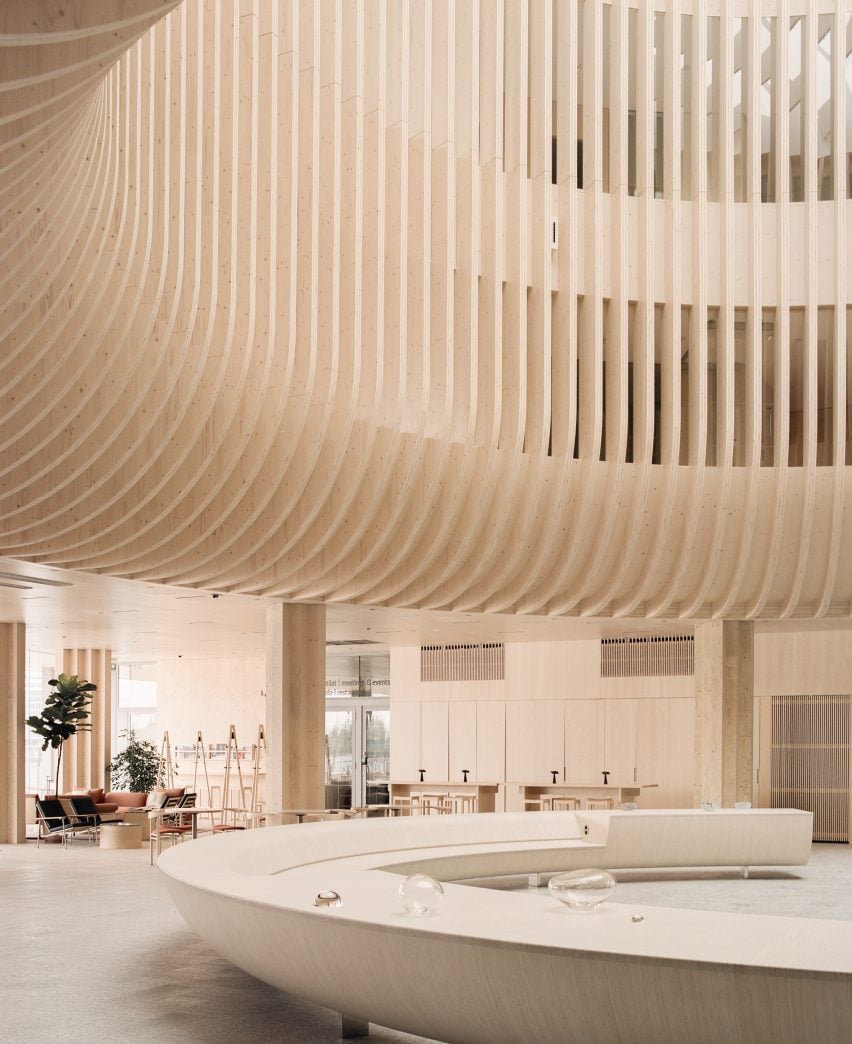
Timber takes centre stage throughout the interiors, where the majority of walls and flooring were made of wood, as well as various pieces of minimalist furniture.
At the centre of the building, a central hall acts as the entrance space for both the offices and the hotel as well as connecting with the ground floor restaurant.
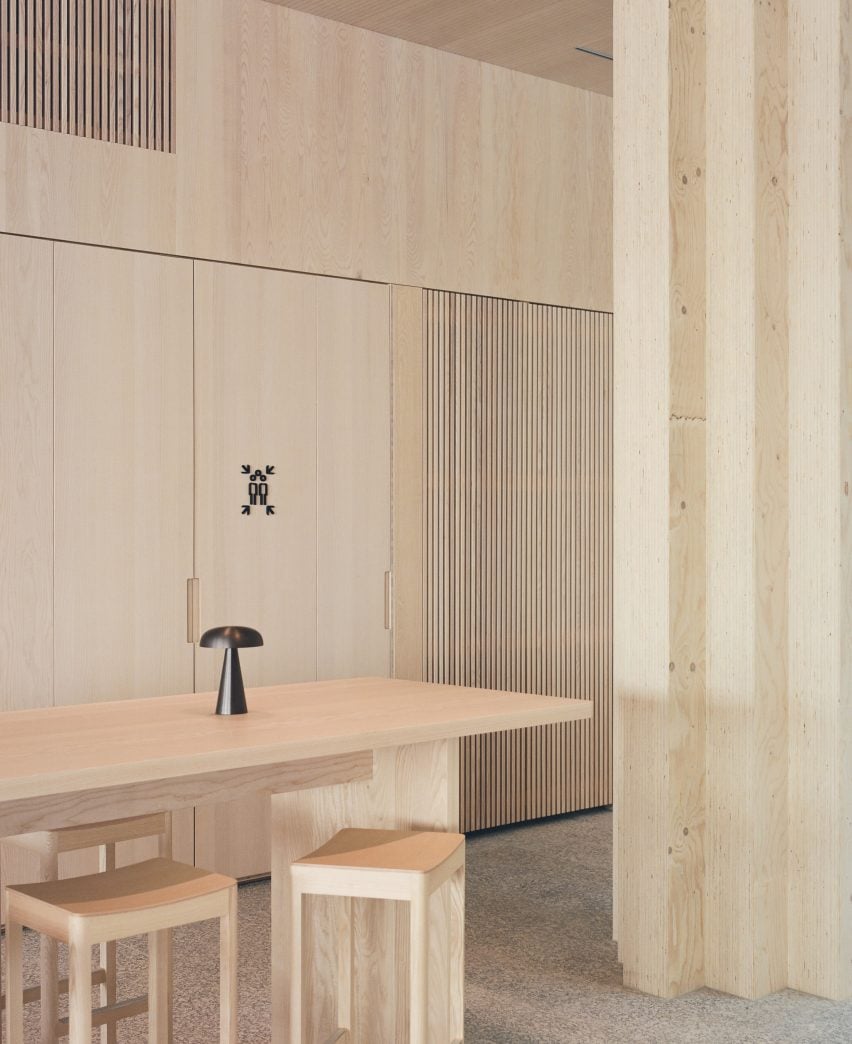
It is crowned by a rounded, slatted ceiling that spans the height of the structure and is punctuated by a skylight.
A circular timber bench was placed directly underneath the skylight to serve as a brightly illuminated communal meeting space.
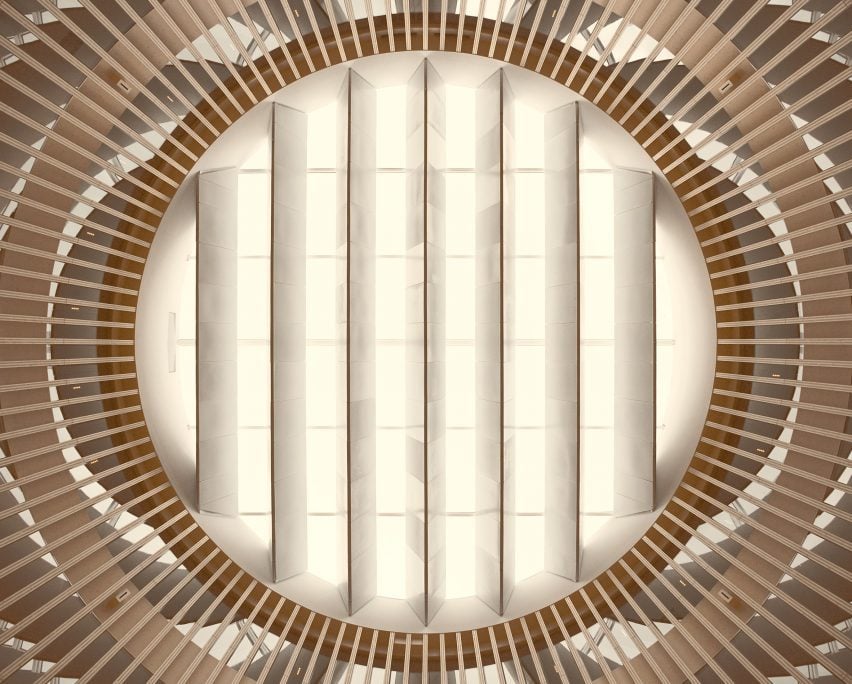
Office space occupies the upper floors of one half of the building, while the hotel is in the other half.
Designed to offer “a sustainable alternative to traditional luxury”, the hotel features minimalist timber interior design by local studio Franz.
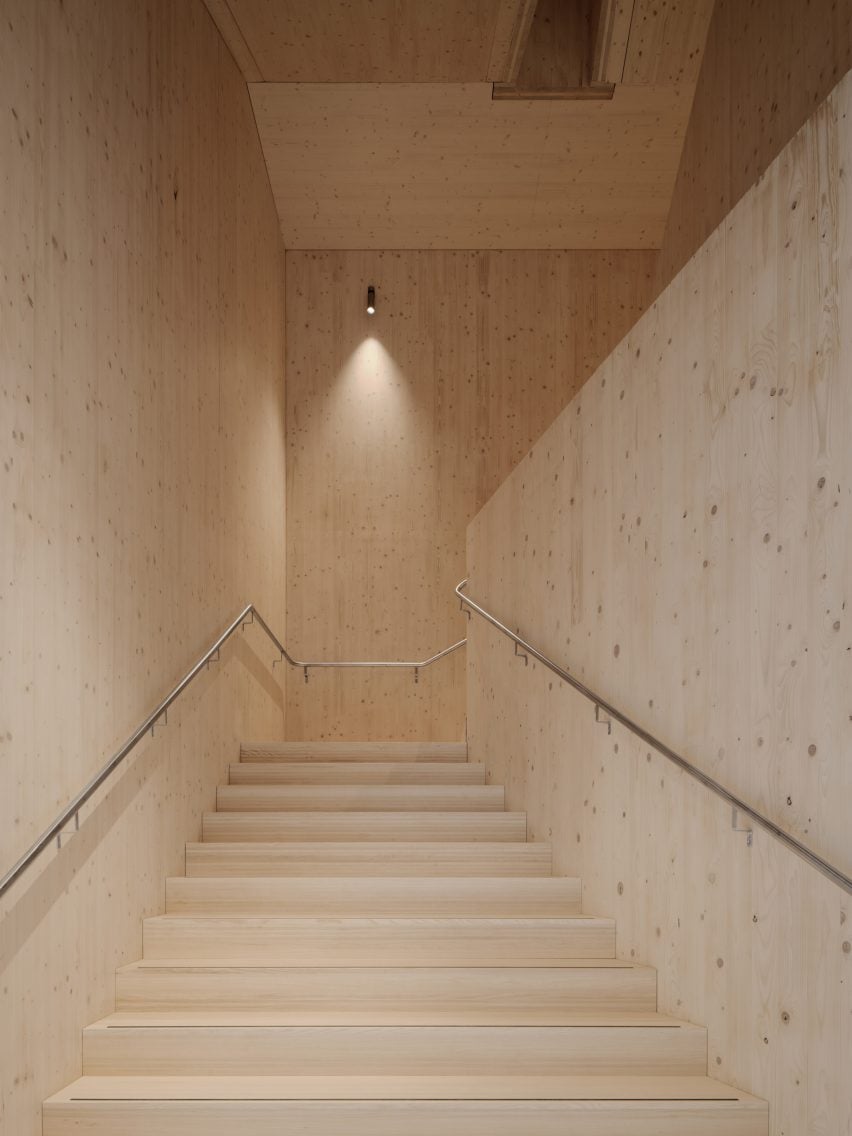
Finnish restaurant Harbore is positioned on the street level, while the green rooftop includes a bar with panoramic views of the coast and cityscape.
Anttinen Oiva Architects also planted a fresh birch grove in the building’s narrow inner courtyard to welcome guests to the timber-heavy building.
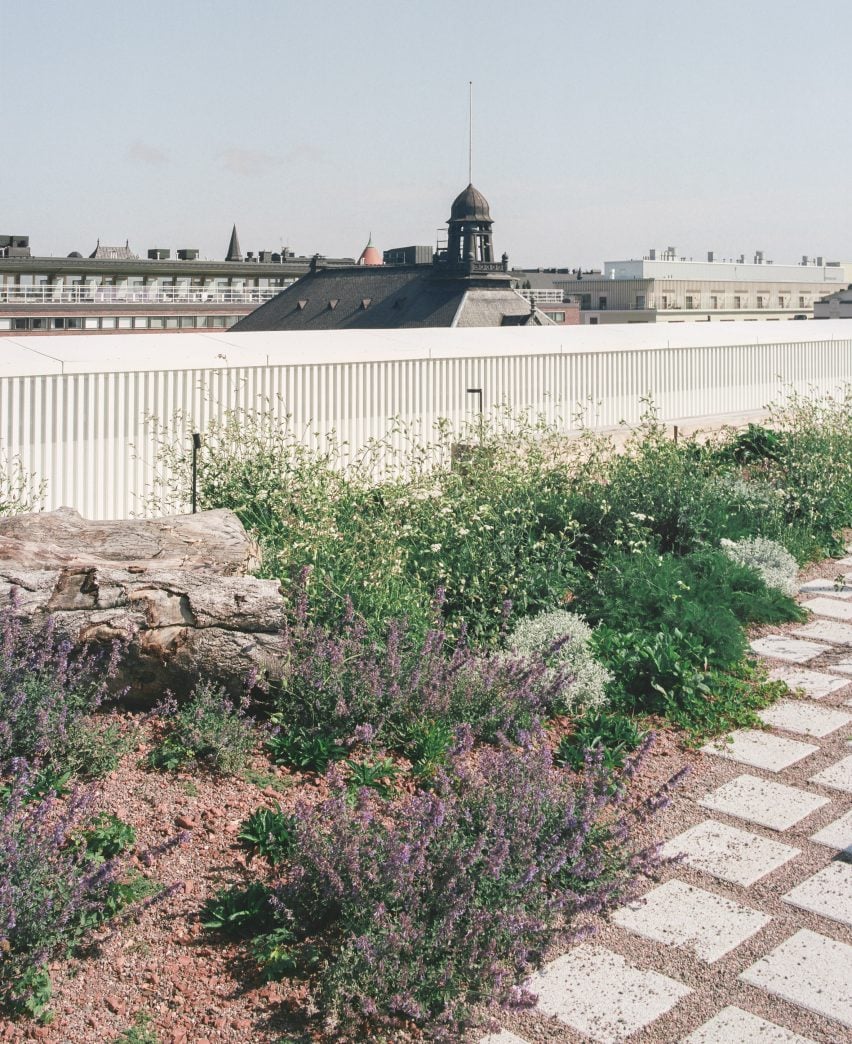
Helsinki aims to become carbon-neutral by 2035, thanks to the local government’s Carbon Neutral Helsinki Initiative. According to the architecture studio, Katajanokan Laituri contributes to that plan.
“We have a long tradition of wooden construction in Finland, but larger-scale examples in urban environments are still few,” said Anttinen Oiva Architects.
Katajanokan Laituri is located in Helsinki’s rapidly evolving South Harbour, close to Verstas Architects’ timber pavilion, completed as an entry point for the 2021 Helsinki Biennial art festival, which has become a permanent addition to the city.
The harbour site will also be home to the city’s hotly anticipated New Museum of Architecture and Design. The design of the museum will be determined by a competition between 623 recently submitted anonymous proposals, with the winner announced in September 2025.
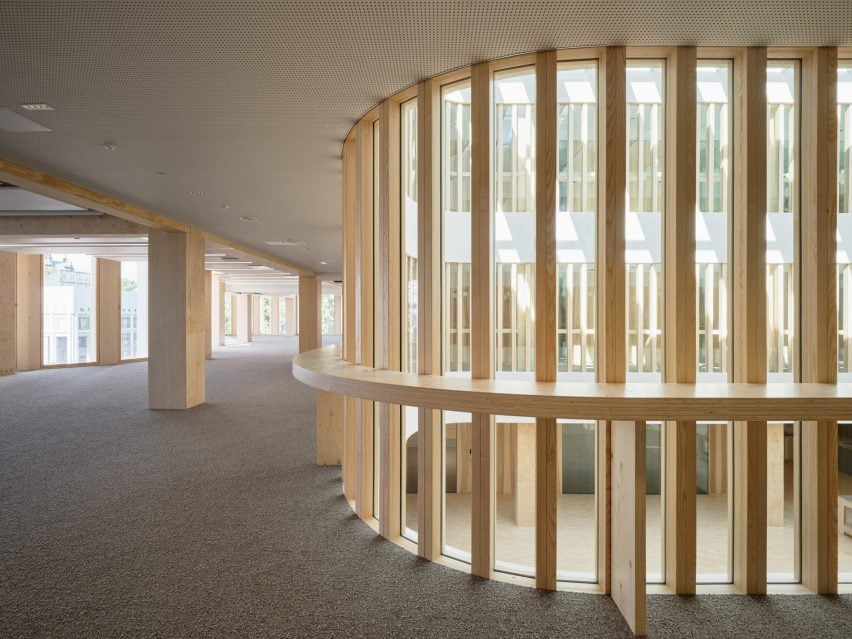
Elsewhere in Helsinki, American studio Steven Holl Architects has completed Meander, a housing block with a snaking form that frames gardens and maximises outward views.
The city’s annual design week recently concluded and featured projects such as innovative applications of cellulose by Aalto University students.
The photography is by Kalle Kouhia unless stated otherwise.

